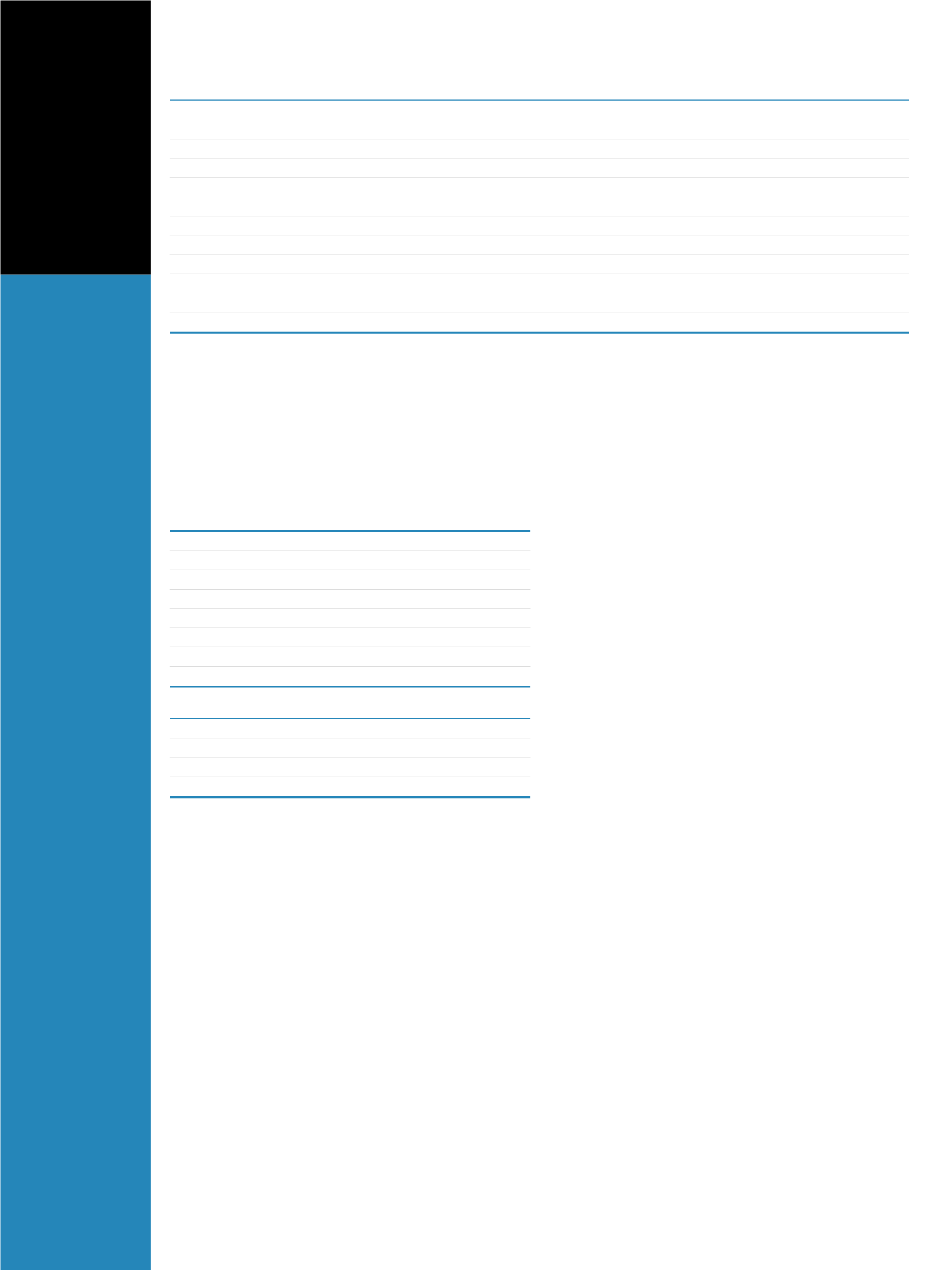

MS/MS
MS/MS analysis was carried out on a Thermo Scientific
TSQ Quantum Ultra triple stage quadrupole mass
spectrometer with an atmospheric pressure chemical
ionization (APCI) probe.
The MS/MS conditions were as follows:
Ion Polarity:
Positive Ion Mode
Vaporizer Temperature:
475 °C
Capillary Temperature:
200 °C
Discharge Current:
5.0 µA
Sheath Gas Pressure:
60 units
Auxiliary Gas Pressure:
20 units
Scan Type:
Unit Resolution
Scan Time:
0.100 s
Results and Discussion
Representative-SRM chromatograms for cortisol and
cortisone at 0.25 µg/dL and 20 µg/dL are shown in
Figures 1 through 4. Clearly identifiable and quantifiable
peaks were observed.
Figure 5 shows the linear fit calibration curve for
cortisol. The calibration curve has an R
2
value greater
than 0.99, which indicates an excellent linear fit over the
dynamic range of 0.12 – 20 µg/dL. The LOQ value is
0.12 µg/dL with LOD values approximately 3 times lower.
Figure 6 shows the linear fit calibration curve for
cortisone. The calibration curve has an R
2
value greater
than 0.99, which indicates an excellent linear fit over the
dynamic range of 0.20 – 20 µg/dL. The LOQ value is
0.20 µg/dL with LOD values approximately 3 times lower.
The method precision for cortisol was evaluated by
analyzing urine cortisol pools at concentrations of 0.06,
0.15, 0.9, 4.1 and 10 µg/dL. For cortisone, precision was
evaluated by analyzing urine cortisone pools at concen-
trations of 0.07, 0.29, 3.2, 5.1, and 12.1 µg/dL. Intra-assay
variability was determined by processing and analyzing
twenty replicates of one low urine pool and two quality
control urine pools. Inter-assay variability was determined
by processing and analyzing two replicates of the four
urine quality pools in five different batches. Intra-assay
and inter-assay precision results are displayed in Table 3
as % CV.
Conclusion:
A fast, sensitive and reliable LC-MS/MS SRM method has
been developed for the determination of cortisol and
cortisone in urine for use in clinical research. Sample
analysis was performed with a runtime of 10 minutes with
a quantification limit of 0.12 µg/dL for cortisol and a
linearity range of 0.12 – 20 µg/dL for cortisol. The
quantification limit for cortisone is 0.20 µg/dL and a
linearity range of 0.20 – 20 µg/dL. The low intra-assay
and inter-assay variability of the results demonstrates the
reliability of the method.
References and Acknowledgements:
1. H.M. Dodds, P.J. Taylor, G.R. Cannell, S.M. Pond. A High Performance
Liquid Chromatography-Electrospray–Tandem Mass Spectrometry
Analysis of Cortisol and Metabolites in Placental Perfusate. Analytical
Biochemistry 247, 342-347 (1997).
2. Lin CL, Wu TJ, Machacek DA, Jiang NS, Kao PC. Urinary free cortisol and
cortisone determined by High Performance Liquid Chromatography in the
Diagnosis of Cushing’s syndrome. J Clin Endo Metab, 1997;82:151-155.
3. Taylor, RL, Machacek, D, Singh, RJ. Validation of a High-Throughput
Liquid Chromatography–Tandem Mass Spectrometry Method for Urinary
Cortisol and Cortisone. Clin. Chem., Sep 2002; 48: 1511 - 1519.
Time (min)
Loading Flow (µL/min)
Loading A% Loading B% Loading C% Loading D% Eluting Flow (µL/min)
Eluting A% Eluting B%
0.00
1.5
100
0.75
100
1.00
1.5
100
0.75
100
2.00
0.2
100
0.55
100
2.10
0.2
70
30
0.55
100
3.60
1.0
100
0.75
20
80
5.10
2.0
100
0.75
20
80
5.82
2.0
100
0.75
20
80
6.53
2.0
100
0.75
20
80
7.25
2.0
100
0.75
20
80
7.97
1.5
100
0.75
20
80
8.47
1.5
70
30
0.75
100
9.47
1.5
100
0.75
100
Table 1: HPLC gradient
Analyte
Parent Ion (Q1)
Product Ion (Q3) Collision Energy Tube Lens
Cortisol
363.188
121.047
24
109
Cortisol
363.189
97.034
18
109
Cortisone
361.179
163.067
22
103
Cortisol IS
366.300
121.000
25
140
Table 2: SRM Transitions and their parameters



















